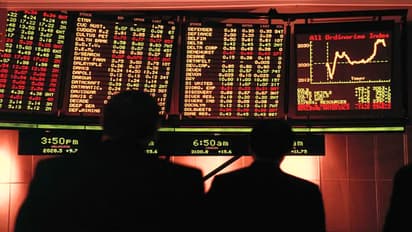From boom to bust in 30 minutes: How a fake Trump tariff pause sparked chaos on wall street

Synopsis
A fake tweet about Trump's tariff pause wiped out $2.5 trillion in 30 minutes. Here's how Wall Street went from boom to bust in half an hour.
In a stunning display of just how fragile global markets can be in the digital age, a single 15-word tweet caused the United States stock market to swing wildly within minutes on April 7, wiping out and adding trillions in market value—all based on misinformation.
It began around 10:10 am ET, when the popular X (formerly Twitter) account "Walter Bloomberg"—followed by nearly a million users—posted "HASSETT: TRUMP IS CONSIDERING A 90-DAY PAUSE IN TARIFFS FOR ALL COUNTRIES EXCEPT CHINA."
Also read: THESE 4 sectors may outperform broader market in coming months: Expert view
The post, referring to Kevin Hassett, director of the National Economic Council during Donald Trump's presidency, was completely unverified at the time. Yet, in just minutes, Wall Street reacted as if it were an official announcement.
The S&P 500, which had been down by 4.7% earlier in the day, suddenly surged to a 3.4% gain, marking an extraordinary intraday swing of 8.1%—an extremely rare movement in such a short span. In terms of raw numbers, the S&P 500 added $2.4 trillion in market value between 10:08 am and 10:18 am, according to Dow Jones Market Data.
The situation escalated when CNBC aired the headline around 10:15 am, giving it further legitimacy despite noting it was unconfirmed. A few minutes later, Reuters reportedly picked up the story and attributed it to CNBC, compounding the confusion.
However, by 10:41 am, the White House issued a strong denial, confirming that no such tariff pause was being considered. This triggered a sharp reversal, and the market gave up all of its gains—and more—resulting in a $2.5 trillion wipeout in less than half an hour.
The rapid boom-and-bust cycle underscored just how sensitive global markets remain to US trade policy, particularly tariff-related developments, and how misinformation—whether deliberate or accidental—can cause chaos at an unprecedented scale.
The Walter Bloomberg account, despite its name, has no affiliation with Bloomberg News. It is known for posting rapid-fire financial headlines, often paraphrased or copied from other news sources. Following the incident, the account tweeted simply, "wtf," after realising the information was incorrect.
CNBC responded by saying: "As we were chasing the news of the market moves in real-time, we aired unconfirmed information in a banner. Our reporters quickly made a correction on air."
Also read: RBI alert: Submit THIS document by April 10 or risk losing access to your savings
The event has raised serious questions about the speed-first culture of financial reporting and the reliance on social media as a source for breaking news. It also calls attention to the need for tighter controls and verification mechanisms in an age where a single post can move trillions.
Stay updated with all the latest Business News, including market trends, Share Market News, stock updates, taxation, IPOs, banking, finance, real estate, savings, and investments. Track daily Gold Price changes, updates on DA Hike, and the latest developments on the 8th Pay Commission. Get in-depth analysis, expert opinions, and real-time updates to make informed financial decisions. Download the Asianet News Official App from the Android Play Store and iPhone App Store to stay ahead in business.